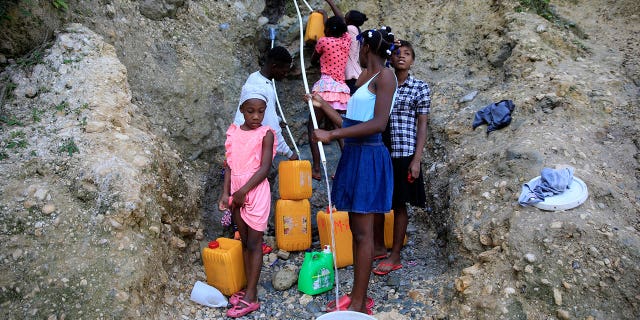

From droughts stifling once-reliant sources to destructive downpours and floods, what the world does about its water woes is the central question at the U.N.'s three-day water conference that begins Wednesday. Coinciding with the 30th anniversary of World Water Day, it's the first dedicated U.N. conference on water in nearly 50 years.
CYCLONE FREDDY DISSIPATES AFTER KILLING HUNDREDS IN MALAWI, MOZAMBIQUE

People, without running water at home, collect water from a ravine in Port-au-Prince, Haiti, on March 21, 2023. (AP Photo/Odelyn Joseph)
Climate change, pollution and waste have compounded water concerns by squeezing the Earth's resources. Some supplies have dwindled from lack of rain, with dry spells often lasting months if not years in some places. Others have had essential supplies contaminated by chemicals or toxins from human activity.
A punishing winter drought in southern Europe left reservoirs so dry that officials are moving fish for their survival. Kenya's dry weather and a lack of infrastructure means many people gather water at local hubs to collect enough. Peru's water workers must treat water contaminated by waste from abandoned mines, bacteria and garbage. In Haiti, where running water is unavailable in some homes, people, including children, fill large jugs in dwindling ravines.
Some countries exposed to too much or too little water have already found ways to keep water flowing in the needed amounts. In the Netherlands, where about a third of the country is below sea level, wind pumps prevent regions from being flooded.
Delegates attending the conference in New York will agree on an agenda on Friday aimed at advancing toward a goal of having readily available, sustainably managed water and sanitation for everyone across the globe.
